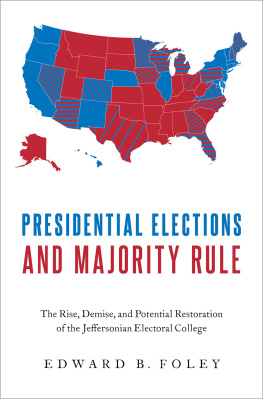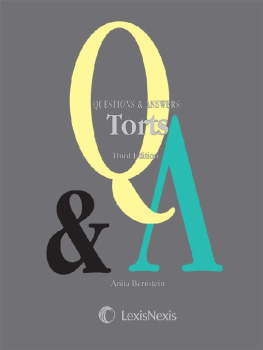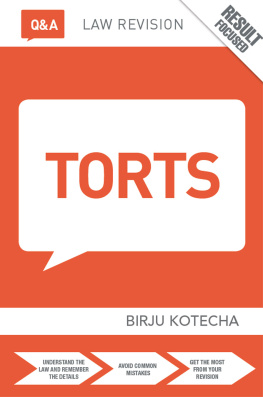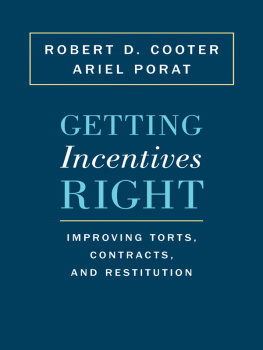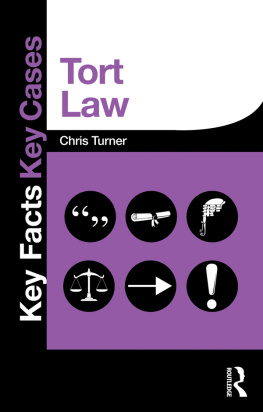H. Beau Baez - Torts: Majority Rule Cases
Here you can read online H. Beau Baez - Torts: Majority Rule Cases full text of the book (entire story) in english for free. Download pdf and epub, get meaning, cover and reviews about this ebook. year: 2015, publisher: BookBaby, genre: Romance novel. Description of the work, (preface) as well as reviews are available. Best literature library LitArk.com created for fans of good reading and offers a wide selection of genres:
Romance novel
Science fiction
Adventure
Detective
Science
History
Home and family
Prose
Art
Politics
Computer
Non-fiction
Religion
Business
Children
Humor
Choose a favorite category and find really read worthwhile books. Enjoy immersion in the world of imagination, feel the emotions of the characters or learn something new for yourself, make an fascinating discovery.
- Book:Torts: Majority Rule Cases
- Author:
- Publisher:BookBaby
- Genre:
- Year:2015
- Rating:4 / 5
- Favourites:Add to favourites
- Your mark:
- 80
- 1
- 2
- 3
- 4
- 5
Torts: Majority Rule Cases: summary, description and annotation
We offer to read an annotation, description, summary or preface (depends on what the author of the book "Torts: Majority Rule Cases" wrote himself). If you haven't found the necessary information about the book — write in the comments, we will try to find it.
A torts casebook reflecting the law in a majority of states. This majority rule approach should provide students with the law they need for the torts portion of the bar exam. The casebook does not contain notes or explanations, and is suited for a course supplemented with problems.
Torts: Majority Rule Cases — read online for free the complete book (whole text) full work
Below is the text of the book, divided by pages. System saving the place of the last page read, allows you to conveniently read the book "Torts: Majority Rule Cases" online for free, without having to search again every time where you left off. Put a bookmark, and you can go to the page where you finished reading at any time.
Font size:
Interval:
Bookmark:

This casebook is designed to help students learn the law in an educational setting. Learn Law Better provides educational materials, which are not a substitute for the expertise provided by a licensed lawyer. If you desire legal advice then please hire a licensed professional.
Copyright 2015 by H. Beau Baez
All rights reserved.
eBook ISBN: 978-0-9861455-0-6
Published in the United States by Learn Law Better, LLC
learnlawbetter.com
First Edition
Preface
This casebook is designed for use in a first year law school Torts course. As with other casebooks, the cases in this book were selected because they are interesting and pedagogically useful. But unlike most other casebooks, these cases were selected with an eye to the law that students are likely to encounter on the Multistate Bar Examination. The bar examiners select rules of law through a rigorous process, generally resulting in questions derived from the tort law used in a majority of states. This casebooks approach eliminates case law followed in only one or a handful of statescases that appear in other casebooks. In addition to preparing students for the Multistate Bar Examination, which is worthwhile in itself for a professional school, a single rule of law approach allows the faculty member to focus on teaching fundamental analytical skillsthe hallmark of what we mean by the phrase thinking like a lawyer. Another advantage of this approach is that students are unlikely to be confused on an exam, unsure as to what rule of law the professor wants spotted and analyzed. After all, in the actual practice of law, almost every lawyer only needs to find the rule of law in their jurisdiction. While comparing, contrasting, and synthesizing the laws from two or more jurisdictions is an important skill, especially for judges and appellate attorneys, it is not necessarily a skill that should be taught extensively throughout a first year Torts course. That being said, there are a few cases where minority approaches are included to help a faculty member introduce that skill. Also, several tort classics are retained, such as United States v. Carroll Towing and Brown v. Kendall.
A second characteristic of this casebook is that it is designed for students, not scholars. Internal citations have been removed, punctuation changed, quotations marks eliminated, archaic words modernized, sentence structure altered, paragraphs relocated, most author names deleted, and other changes to make the cases more accessible to students. The goal is to create a case that reads like a story, which will help increase student learning. For those that want to read the unaltered cases, a case citation is provided after each case name to allow access to the original.
Finally, this casebook does not contain explanations, notes, or problems, which is reminiscent of the approach taken by Christopher Columbus Langdell in the first casebook ever published. This casebook should be supplemented with problems, and because it uses a majority rule approach, works well when assigned along with a concise hornbook. As Langdell noted in his landmark 1871 casebook, Selection of Cases on the Law of Contracts: Law, considered as a science, consists of certain principles or doctrines. To have such a mastery of these as to be able to apply them with constant facility constitutes a true lawyer; and hence to acquire that mastery should be the business of every earnest student of law.
H. Beau Baez, III
Intentional Torts
Snyder v. Turk
Court of Appeals of Ohio, Second District (1993)
The facts in this case occurred during a gall bladder removal operation. The operation took approximately one and one-half hours. The operating surgeon was the defendant-appellee, Dr. Robert Turk. The plaintiff-appellant, Barbara Ann Snyder, was the scrub nurse. Snyder filed a complaint seeking damages from Dr. Turk based upon allegation of civil battery.
The plaintiff has appealed after the trial court removed all issues from jury consideration by granting the defendant a directed verdict at the close of the plaintiffs case.
Dr. Turk began to perform a laparoscopic cholecystectomy. Dr. Turk testified that I had reached a level of frustration both by the difficulty of the procedure and the difficult exposure and with the instruments. He was also not happy with Snyders performance.
The plaintiff testified:
Q. Any conversation at this time between you and the defendant?
A. Dr. Turk looked at Dr. Clark at that point and said, Shes already made three mistakes.
Q. Did you respond?
A. I said, what have I done Dr. Turk? And he ignored me.
Q. Did there come a time when the defendant asked for a right angle?
A. Yes.
Q. And what did he say?
A. Right angle please.
Q. Did he specify length?
A. No.
Q. What did you hand him?
A. A right angle.
Q. When you hand the right angle to the defendant, what happens?
A. He takes the clamp from me and then he looks at it like he was going to use it and he throws it back at me.
Q. What happens next?
A. Thats when Im standing there and when he reached up and grabbed my shoulder and my gown and pulled me down from a standing position instantly down to the surgical wound and started screaming, cant you see where Im working? Im working in a hole. I need long instruments. I need long right angles now.
Q. What part of Dr. Turks body was in contact with yours?
A. His hand.
Q. And when, you know, right after he makes contact with you, what happens?
A. Im pulled from a standing position immediately down to like a 90 degree angle, right down onto the surgical field.
Q. Where is your face in the end in relation to the patient there on the table?
A. Looking right down into the surgical wound.
Q. And how far is your face from the wound?
A. Maybe 12 inches.
The plaintiff also testified that she did not suffer any physical injury from her contact with Dr. Turk.
The parties agree that a battery is defined as an intentional, unconsented-to contact with another. The appellee contends that there is no liability for the commission of a battery absent proof of an intent to inflict personal injury. Dr. Turk further contends that the directed verdict was properly granted on the battery liability issue because of the absence of evidence that he intended to inflict personal injury.
We believe that reasonable minds could conclude that Dr. Turk intended to commit an offensive contact. We reverse and remand for further proceedings consistent with the opinion.
Cohen v. Smith
Appellate Court of Illinois (1995)
Patricia Cohen was admitted to St. Joseph Memorial Hospital (Hospital) to deliver her baby. After an examination, Cohen was informed that it would be necessary for her to have a cesarean section. Cohen and her husband allegedly informed her physician, who in turn advised the Hospital staff, that the couples religious beliefs prohibited Cohen from being seen unclothed by a male. Cohens doctor assured her husband that their religious convictions would be respected.
During Cohens cesarean section, Roger Smith, a male nurse on staff at the Hospital, allegedly observed and touched Cohens naked body. Cohen and her husband filed suit against Nurse Smith and the Hospital. The trial court allowed defendants motions to dismiss. We reverse.
Historically, battery was first and foremost a systematic substitution for private retribution. Protecting personal integrity has always been viewed as an important basis for battery. Consequently, the defendant is liable not only for contacts which do actual physical harm, but also for those relatively trivial ones which are merely offensive and insulting. This application of battery to remedy offensive and insulting conduct is deeply ingrained in our legal history. As early as 1784, a Pennsylvania defendant was prosecuted for striking the cane of a French ambassador. The court furthered the distinction between harmful offensive batteries and nonharmful offensive batteries:
Next pageFont size:
Interval:
Bookmark:
Similar books «Torts: Majority Rule Cases»
Look at similar books to Torts: Majority Rule Cases. We have selected literature similar in name and meaning in the hope of providing readers with more options to find new, interesting, not yet read works.
Discussion, reviews of the book Torts: Majority Rule Cases and just readers' own opinions. Leave your comments, write what you think about the work, its meaning or the main characters. Specify what exactly you liked and what you didn't like, and why you think so.

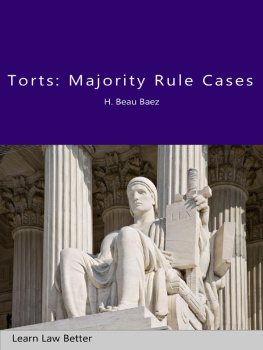

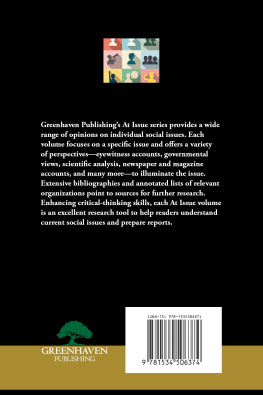

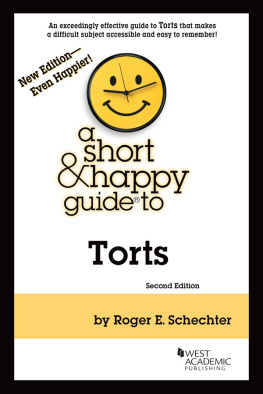
![Richard A. Epstein - Cases and Materials on Torts (Aspen Casebook) [Connected Casebook]](/uploads/posts/book/244338/thumbs/richard-a-epstein-cases-and-materials-on-torts.jpg)
